Hellenic Air Force
The Hellenic Air Force (HAF; Greek: Πολεμική Αεροπορία, Polemikí Aeroporía, literally "War Aviation", sometimes abbreviated as ΠΑ) is the air force of Greece with ‘Hellenic’ being a synonym for ‘Greek’ in the Greek language. During the period of monarchy between 1935–1973 the force was known as the Royal Hellenic Air Force (RHAF) (Greek: Ἑλληνικὴ Βασιλικὴ Ἀεροπορία, Ellinikí Vasilikí Aeroporía).
| Hellenic Air Force | |
|---|---|
| Πολεμική Αεροπορία | |
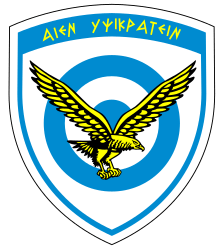 Hellenic Air Force seal | |
| Founded | 1930[1][2] |
| Country | |
| Type | Air Force |
| Role | Aerial warfare |
| Size | approx. 33,000 personnel 400+ aircraft 8 types of air defence systems |
| Part of | Hellenic Armed Forces |
| Patron | Archangels Michael and Gabriel |
| Motto(s) | Αἰὲν Ὑψικρατεῖν "Always Dominate the Heights" |
| Colors | Air Force blue, White & Gold |
| Anniversaries | November 8 each year |
| Engagements | Balkan Wars World War I Greco-Turkish War (1919–1922) World War II Air operations during the Greek Civil War Korean War Turkish invasion of Cyprus Operation Desert Storm War on Terror 2011 military intervention in Libya |
| Website | Hellenic Airforce |
| Commanders | |
| Chief of Air Force General Staff | Air Marshal Georgios Blioumis |
| Notable commanders | Christos Adamidis (Maj.Gen. in Hellenic Army Air Service) Air Cdre Michael Moutoussis Wg Cdr Kostas Perrikos |
| Insignia | |
| Roundel |  |
| Fin flash | 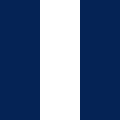 |
| Aircraft flown | |
| Attack | F-16, Mirage 2000 |
| Bomber | F-4 Phantom II |
| Electronic warfare | EC-130H |
| Fighter | F-16, Mirage 2000 |
| Reconnaissance | Embraer E-99A (AEW&C), Pegasus II, P-3 Orion |
| Trainer | P2002 Sierra, T-6 Texan II, T-2, Mirage 2000 |
| Transport | C-27J, C-130, ERJ-135, Gulfstream V, Eurocopter AS332 Super Puma, Bell 205 |
The Hellenic Air Force is one of the three branches of the Hellenic Armed Forces and its mission is to guard and protect Greek airspace, provide air assistance and support to the Hellenic Army and the Hellenic Navy, as well as the provision of humanitarian aid in Greece and around the world. The Hellenic Air Force includes approximately 33,000 active troops, of whom 11,750 are career officers, 14,000 are professional conscripts (ΕΠ.ΟΠ.), 7,250 are volunteer conscripts and 1,100 are women. The motto of the Hellenic Air Force is the ancient Greek phrase Αἰὲν Ὑψικρατεῖν (Aièn Hypsikrateîn, "Always Dominate the Heights"), and the HAF ensign represents a flying eagle in front of the Hellenic Air Force roundel.
History
Origins
In 1911, the Greek Government appointed French specialists to form the Hellenic Aviation Service. Six Greek officers were sent to France for training, while the first four Farman type aircraft were ordered. All six graduated from the Farman school in Étampes near Paris, but only four subsequently served in aviation. The first Greek civilian aviator that was given military rank was Emmanuel Argyropoulos, who flew in a Nieuport IV.G. "Alkyon" aircraft, on February 8, 1912. The first military flight was made on May 13, 1912 by Lieutenant Dimitrios Kamberos. In June, Kamberos flew with the "Daedalus", a Farman Aviation Works aircraft that had been converted into a seaplane, setting a new average speed world record at 110 km/h (68 mph). In September of the same year the Greek Army fielded its first squadron, the "Aviators Company" (Greek: Λόχος Αεροπόρων).
Balkan Wars and aftermath (1912–1930)

On October 5, 1912, Kamberos flew the first combat mission, a reconnaissance flight over Thessaly. This was on the first day of the Balkan wars. On the same day a similar mission was flown by German mercenaries in Ottoman service, over the Thrace front against the Bulgarian Army. The Greek and the Ottoman missions, coincidentally flown on the same day, were the first military aviation missions in the history of conventional war. As a matter of fact, all Balkan countries used military aircraft and foreign mercenaries during the Balkan Wars.
January 24, 1913 saw the first naval co-operation mission in history, which took place over the Dardanelles. Aided by the Royal Hellenic Navy destroyer RHNS Velos, 1st Lieutenant Michael Moutoussis and Ensign Aristeidis Moraitinis flew the Farman hydroplane and drew up a diagram of the positions of the Turkish fleet, against which they dropped four bombs. This was not the first air-to-ground attack in military history, as there was a precedent in the Turkish-Italian war of 1911, but the first recorded attack against ships from the air.
Initially, the Hellenic Army and the Royal Hellenic Navy operated separate Army Aviation and Naval Aviation units. During the Balkan Wars, various French Henry and Maurice Farman aircraft types were used. The Hellenic Naval Air Service was officially founded in 1914 by the then Commander in Chief (CnC) of the Royal Hellenic Navy, British Admiral Mark Kerr. Greek aviation units participated in World War I and the Asia Minor Campaign, equipped by the Allies with a variety of French and British designs.
Foundation, World War II and Civil War (1930–1950)
_Squadron_RAF_Hurricane_pilots_Egypt_WWII_IWM_CM_3362.jpg)
In 1930 the Aviation Ministry was founded, establishing the Air Force as the third branch of the Hellenic Armed Forces. The Hellenic Army Air Service and Hellenic Naval Air Service were merged into a single service, the Royal Hellenic Air Force. In 1931 the Hellenic Air Force Academy, the Icarus School (Greek: Σχολή Ικάρων), was founded.
In 1939, an order for 24 Marcel Bloch MB.151 fighter aircraft was placed, but only 9 of the aircraft reached Greece, since the outbreak of World War II prevented the French from completing the order. The aircraft entered service in the 24th Pursuit Squadron (MD – Moira Dioxis) of the Air Force.
During the Italian invasion of Greece (1940) in the Second World War, although being severely outnumbered and counting only 79 aircraft against 380 fighters and bombers of the Italian Regia Aeronautica,[3] RHAF managed to successfully resist the assault. On October 30, two days after the start of the war, there was the first air battle. Some Henschel Hs126s of 3/2 Flight of 3 Observation Mira took off to locate Italian Army columns. But they were intercepted and attacked by Fiat CR.42s of 393a Squadriglia. A first Henschel was hit and crashed, killing its observer, Pilot Officer Evanghelos Giannaris, the first Greek aviator to die in the war. A second Hs 126 was downed over Mount Smolikas, killing Pilot Officer Lazaros Papamichail and Sergeant Constantine Yemenetzis.[4] On November 2, 1940, a Breguet 19 intercepted the 3 Alpine Division Julia while it was penetrating the Pindos mountain range in an attempt to occupy Metsovo. On the same day, 2nd Lieutenant Marinos Mitralexis having run out of ammunition, aimed the nose of his PZL P.24 right into the tail of an enemy Cant Z1007bis bomber, smashing the rudder and sending the aircraft out of control.[5]
After 65 days of war the RHAF had lost 31 officers, 7 wounded, plus 4 NCOs killed and 5 wounded. Meanwhile, the number of combat aircraft had dropped to 28 fighters and 7 battleworthy bombers.[6] Still by March 1941, the Italian invasion on air and ground had been successfully pushed back, aided by the vital contribution of the RHAF to the Greek victory. During the Greco-Italian War the Hellenic Air Force shot down 68 enemy aircraft (official records) and claimed another 24. The British RAF claimed 150 additional air victories against Italian aircraft. However surprisingly, the Italian Air Force recorded only 65 aircraft lost, during the entire campaign against the Greeks and later the British, with 495 additional aircraft reported as damaged.[7]
In April 1941, the German Wehrmacht invaded Greece in order to assist the Italian assault. During this second wave of foreign invasion, the Luftwaffe eventually succeeded in destroying almost the entire Hellenic Air Force. However, some aircraft managed to escape to the Middle East,[5] including 5 Avro Anson, 1 Dornier Do 22 and 3 Avro 626.
During the German occupation of Greece, the Air Force was rebuilt under the expatriated Greek Air Force Ministry based in Cairo. Three squadrons were built, operating under the command of the British RAF. These squadrons were the 13th Light Bombing Squadron flying Avro Ansons, Bristol Blenheims and Martin Baltimores and the 335 and 336 Fighting Squadrons flying Hawker Hurricane I and IIs and Spitfire V types. The RHAF squadrons in the Middle East flew a variety of missions, including convoy patrols, antisubmarine search, offensive patrols, reconnaissance, attack and interception of enemy aircraft. In Summer 1943, the Greek squadrons participated in the attack against the German Wehrmacht on the island of Crete and then from May to November 1944 in Italy. During those years, 70 Greek pilots were lost.[8]
During World War II Greek pilots who were flying with the RAF achieved many victories. Rhodesian-born Wing Commander John Agorastos Plagis shot down 16 enemy aircraft over Malta and Western Europe. Lieutenant Vasilios Michael Vassiliadis was credited with 11.5 enemy aircraft over Western Europe before he was killed in action on March 15, 1945 over Germany. Steve Pisanos, an immigrant to the US in 1938, joined an Eagle Squadron of American volunteers in the RAF and fought over Western Europe. He later joined the USAAF and acquired US citizenship and continued to fly with the same squadron, now part of the USAF 4th FG. He had achieved 10 victories with the USAAF by 1944.
After Greece's liberation in 1944, RHAF returned to Greece and subsequently played a decisive role in the Greek Civil War, which lasted until 1950. By then, it was re-equipped with Supermarine Spitfire Mk IX, Spitfire Mk XVI fighters and Curtiss SB2C Helldiver bombers.
Post-war developments (1950–1970)

.jpg)
After the end of the Greek Civil War in November 1950, Greece sent 7 Douglas C-47 Dakota transport aircraft of the 13th Transport Aircraft Squadron to South Korea to assist the United Nations. Greek aircraft operated in Korea until May 1955. Greek pilots flew thousands of missions including air evacuations, personnel transport, intelligence gathering, and supply flights. In 1952 Greece joined NATO and the Air Force was rebuilt and organized according to NATO standards. New aircraft, including jets, were introduced.
The first jet fighter flown by the RHAF was the Republic F-84G Thunderjet in 1955. It was also flown by the first Air Force aerobatic team 337 SQ “Hellenic Flame” (Greek: Ελληνική Φλόγα). The RF-84F entered service with the 348 Tactical Reconnaissance Squadron in 1956. Although the F-84G was replaced by the Canadair Sabre 2 in 1954 and 1955 after 100 units were retired from the Royal Canadian Air Force and upgraded in the United Kingdom before entering service with the RHAF, the RF-84F remained in service until 1991. The Lockheed T-33 was also delivered as a trainer in 1955. Some RT-33s were used for reconnaissance missions.
In the late 1960s, the RHAF acquired new jet aircraft. These included the Convair F-102 Delta Dagger (in service 1969–1975), the Lockheed F-104G Starfighter and the Northrop F-5 Freedom Fighter. The F-104 and F-5 stayed in service until the mid- to late 1980s.
In the mid-1970s the Hellenic Air Force was further modernized with deliveries of the Dassault Mirage F1CG fleet, the Vought A-7 Corsair II (including a number of TA-7Hs) and the first batch of McDonnell-Douglas F-4 Phantom IIs.
In 1993, the United States Air Force delivered 62 additional A-7Es and TA-7Cs increasing further the air-to-ground capabilities of the HAF. These aircraft remained in service until 2011.[9]
Modernization (1980–1997)
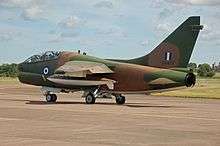
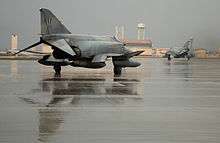
Until the late 1980s the Air Force deployed missiles armed with U.S. nuclear warheads using the LTV TA-7C Corsair II. As a result of Greco-Turkish tension around the 1974 Turkish invasion of Cyprus, the U.S. removed its nuclear weapons from Greek and Turkish alert units to storage. Greece saw this as another pro-Turkish move by NATO and withdrew its forces from NATO's military command structure from 1974 to 1980.
In March 1985 the Greek government announced the purchase of 34 F-16C and 6 F-16D Block 30 variant in the “Peace Xenia I” modernisation program. In the same month Greece ordered 36 single-seat Mirage 2000EG and 4 two-seat Mirage 2000BG, as part of the “Talos” modernization program.
Subsequently, in 1989, the first fourth-generation fighters were introduced, marking the beginning of a new era: the first Mirage 2000 EG/BG aircraft were delivered to the 114 Combat Wing in Tanagra airforce base and equipped the 331 and 332 squadrons. In January 1989 the first F-16C/D Block 30 arrived in 111 combat wing in Nea Anchialos airforce base and were allocated to the 330 "Thunder" and 346 "Jason" interceptor squadrons in Larissa airforce base.[10][11]
On March 29, 1991, the RF-84F were retired from service after 34 years and 7 months of operational life. In November 1992 more RF-4Es were delivered to the 348 "Eyes" Tactical Reconnaissance Squadron.
In 1993 the “Peace Xenia II” modernisation program began. Greece ordered 32 F-16C and 8 F-16D, Block 50 variant. The first Block 50 was delivered on July 25, 1997. These aircraft, equipped with the LANTIRN navigation and targeting pod as well as AIM-120 AMRAAM and AGM-88 HARM missiles, were allocated to the 341 "Arrow" and 347 "Perseus" squadrons in Nea Anchialos airforce base. The basic mission of 341 "Arrow" squadron is Suppression of Enemy Air Defenses (SEAD). The role of 347 "Perseus" squadron is air-to-ground missions.
Entering the 21st century (1998–2007)
.jpg)
In 1998 Greece decided, in collaboration with the German Aerospace Industry (DASA) and the Hellenic Aerospace Industry (HAI/EAB), to upgrade 39 F-4E Phantom II fighters. The first aircraft was delivered at Andravida Air Base in December 2002. This aircraft, which was named "Princess of Andravida" (s/n 72-01523), was unique because it did not have the M61 Vulcan gun installed. All upgraded F-4s were equipped with the new AN/APQ-65YG radar similar to that of the F/A-18 Hornet, a new onboard Mission Control Computer (MCC), a Head Up Display, the IFF Interrogator, Multi Function Displays and were also capable of carrying a variety of advanced Air-to-Air and Air-to-Ground missiles. These included the AIM-120 AMRAAM (although only the -B edition), the AIM-9M missile, the AFDS and the entire family of the Paveway (I, II and III) laser-guided bombs.
These aircraft were the F-4E Peace Icarus 2000 (PI2000) or F-4E Phantom II AUP (Avionics Upgrade Program) variants. Although gradual retirement of F-4 units started in 2017 with view of replacing them with additional new F-16s, as of today these aircraft are still operational in multi-role missions with the 338 Squadron ”Ares” and the 339 Squadron "Ajax” based in Andravida Air Force Base.[12] Recently, according to 338 Squadron "Ares" crews, the F-4E Phantom II PI2000(AUP) has been certified for use of GBU-27 Paveway III laser-guided bombs, making the aircraft an excellent and modern platform for precision strikes.
In 2000, Greece decided to purchase a large number of fighters to replace the remaining non-upgraded F-4E Phantoms, a number of A-7 Corsairs, and the fleet of Mirage F1CGs. An order for 60 F-16 Block 52 Plus was placed.[13] The order was for 50 single-seaters of the C version and 10 two-seaters of the D version.
Until 2001 Greece participated in NATO's "nuclear weapons sharing", using the A-7 Corsair II to deploy tactical B61 nuclear warheads from Araxos Air Force Base. Greece then strategically decided to remove all nuclear weapons under storage in Greece and did not purchase any more aircraft with nuclear mounting capabilities.
In September 2004, Greece also decided to upgrade all of its existing Mirage 2000 to the Mirage 2000-5F Mark 2 (Mk2) standard and place an additional order for 15 new Mirage 2000-5Mk2 aircraft.[13] The project was undertaken by Dassault Aviation and the Hellenic Aerospace Industry (HAI/EAB). The Mirage 2000-5Mk2 has a new and more powerful radar, improved long range Air-to-Ground capabilities which includes the SCALP EG Cruise Missile, a new Self-Protection System (SPS), a new Inertial Navigation System (INS), a Glass Cockpit and the addition of air refuelling capability.
Eventually In 2005, HAF was officially the first air force in the world[14] to add the F-16 Block 52 Plus to its inventory, since the first aircraft were delivered. This advanced F-16 type is an improved version of the Block 50 featuring a more powerful radar, Conformal Fuel Tanks for longer operational range, advanced communication systems, an upgraded engine, Joint Helmet Mounted Cueing System (JHMCS) and is capable of carrying more advanced weapons including the IRIS-T Air To Air missile. Three squadrons are operating with this type of F-16. These squadrons are the 337 Squadron "Ghost" in Larissa air base, the 340 Squadron "Fox" and the 343 Squadron "Star" in Souda air base.[15]
In 2007, the Greek government ordered an additional 30 F-16 fighters, 20 single seaters and 10 double seaters. However this time, the aircraft variant was the F-16C/D Block 52+ Advanced, that had been specifically modified for the Hellenic Air Force and offered as F-16 52M by Lockheed Martin, due to the improved computing power of the onboard mission computer (MMC).[16] The difference between the Block 52+ and the Block 52+ Advanced, is the LINK 16 Communications System of the Advanced version, as well as a more powerful Mission Control Computer, an extra Multi Function Display with a movable map navigation, advanced Debriefing System and the capability to carry the RECCE Reconnaissance Pod. The first aircraft were delivered in May 2009 and fly with the 335 Squadron "Tiger" in Araxos air base.[17][18]
Recent years and future plans
.jpg)
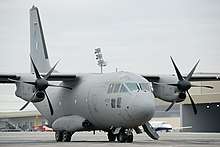
.jpg)
Due to the retirement and obsolescence of units that have ended their operational cycle (A-7E Corsair II and F-4 Phantom II), the HAF was looking forward to acquiring new 4th, 4.5th or 5th generation fighters and at the same time maintain a total number of 300 advanced fighters, according to the Supreme Air Force Council "2007–2012 operational planning" study which was published in 2007. Candidates for the new generation aircraft were the Dassault Rafale, F-35 Lightning II, F/A-18E/F Super Hornet, MiG-35 and the Sukhoi Su-35.[19]
During the Greek economic crisis, budget cuts (2011–2013) forced HAF to ground many of its F-16s due to lack of spare parts and maintenance. Eventually in 2015, Greece requested from the U.S. Government to provide spare parts in support of its F-16, F/RF-4E, C-130H/B, C-27J, T-6A/C, and other aircraft with systems/subsystems of U.S. origin. The estimated cost of this order was $160 million. In addition, past budget cuts, although did not have any significant impact on HAF capabilities, delayed some long-awaited programs for the future. The HAF modernization program estimated in 2007 that a purchase of 45 advance training aircraft, 15 SAR helicopters and 40–60 new fighters was necessary. Some of these programs have either been cancelled or delayed.
To fill the gap, HAF has dedicated resources for the upgrade of the fleet of its existing Mirage 2000 and F-16 fighters. As of 2018, Lockheed Martin has been contracted to upgrade 84 F-16C/D Block 52+ and Block 52+ Advanced (Block 52M) to the latest F-16V Block 70/72 (F-16 Viper) standard,[20] bringing capabilities to the fleet only available in 5th generation fighters such as the F-35 Lightning II. This upgrade has also been considered by HAF as an essential first step for future compatibility with the F-35 fighter, in case Greece eventually decides this purchase. While HAF's earlier F-16C/D Block 30 and Block 50 aircraft are not included in the upgrade, they are expected to receive equipment donated from the upgraded platforms.[21] The upgrade program is scheduled to be completed by 2027.
In July 2016 the upgrade of 6 stored Lockheed P-3B Orion naval support aircraft started, extending the lifetime of 4 airframes to at least 2025. The first upgraded aircraft was delivered in May 2019 and was assigned, as with all other 3 upgrades, to the Navy Aviation Command of the Hellenic Navy,[22] therefore no longer under the command of the Hellenic Air Force.
In April 2019, new developments suggested that, as part of the selection process for the new HAF advanced fighter, Greece was indeed considering the Lockheed Martin F-35 as a replacement of its older F-16 Block 30s or F-4 Phantoms and as complementary to the F-16V upgrade program, but the acquisition of the new aircraft would depend on the country's fiscal plans and Washington's ability to offer a long-term payment framework.[23][24] At the same time, the US Pentagon confirmed Greece as one of 5 countries to be considered as potential new customers.[25] In January 2020, Greece formally expressed interest in acquiring the F-35 and participating in the F-35 program, following a visit by Greek Prime Minister Kyriakos Mitsotakis to the White House. A figure of 20 aircraft was floated, to be acquired no earlier than 2024, following successful completion of the upgrading of the Greek F-16 fleet.[26][27][28]
Politics and political involvement
According to the Greek Constitution and the Hellenic Armed Forces Doctrine after 1974, the armed forces of Greece are required by law to remain politically neutral at all times. In its early years however, the Air Force was considered politically right-wing and royalist. Nevertheless, its officer corps proved to be the most politically left-wing of the Armed Forces.[29] During the Greek Civil War, the officers of the Greek Army denounced their Air Force counterparts as "leftists" and "communists" and considered them disloyal and unreliable.[30]
During the Coup of the Colonels (1967–1974) the Air Force aided King Constantine II in his failed countercoup of December 1967 and many leading Air Force senior officers were tortured by the ESA men of Dimitrios Ioannidis. The only Air Force officer that had a significant role in the dictatorial regime was Antonis Skarmaliorakis.
After Andreas Papandreou and his Panhellenic Socialist Movement (PASOK) rose to power in 1981, ending a long conservative dominance in Greek politics, Air Force officers were proven to be among Papandreou's most enthusiastic supporters in the Armed Forces.[29] Prime Minister Papandreou returned the “favor” and in 1984 he made an Air Force Marshal, Chief of the Hellenic National Defense General Staff making this the first time someone from the Air Force rose to occupy this position.
In international politics, the antagonism between Greece and Turkey has made it imperative for HAF to maintain quantitative and qualitative balance. For years, more frequently than not, HAF and TAF pilots have engaged in mock dogfights over the Aegean sea. Due to Greece's previous economic problems it became less likely for HAF to purchase additional advanced fighters as originally planned. Therefore, this could have affected the balance of air power in the eastern Mediterranean region.[31] This scenario has, so far, been prevented by negative developments in Turkey’s F-35 program in 2019,[32] rise of diplomatic tensions in Turkey-US bilateral relations during the same period [33] and at the same time, the decision of Greece to direct funds towards the further upgrade of its existing F-16 and Mirage 2000 fleet.
Due to the existence of the ‘’Joint Defence Doctrine’’ between Greece and Cyprus HAF is also responsible for the defence of Cypriot airspace, as Cyprus has no air force of its own. HAF aircraft have to be able to reach the island and remain over Cypriot airspace for prolonged periods of time and possibly under combat conditions. The distance between the nearest Greek air base on the island of Crete and Cyprus is about 700 km. Furthermore, the Air Force seeks to have the ability to strike at distances of more than 1,000 km from its bases.
Organisation
Personnel
Commissioned officers
| Officer grade structure of the Hellenic Air Force | ||||||||||
|---|---|---|---|---|---|---|---|---|---|---|
| NATO Code | OF-9 | OF-8 | OF-7 | OF-6 | OF-5 | OF-4 | OF-3 | OF-2 | OF-1 | |
| Insignia |  |
 |
 |
 |
 |
 |
 |
 |
 |
 |
| Title | Pterarchos | Antipterarchos | Ypopterarchos | Taxiarchos | Sminarchos | Antisminarchos | Episminagos | Sminagos | Yposminagos | Anthyposminagos |
| Greek | Πτέραρχος | Αντιπτέραρχος | Υποπτέραρχος | Ταξίαρχος | Σμήναρχος | Αντισμήναρχος | Επισμηναγός | Σμηναγός | Υποσμηναγός | Ανθυποσμηναγός |
| Equivalent title | Air Chief Marshal | Air Marshal | Air Vice-Marshal | Air Commodore | Group Captain | Wing Commander | Squadron Leader | Flight Lieutenant | Flying Officer | Pilot Officer |
NCO/Enlisted
| NCO – Enlisted grade structure of the Hellenic Air Force | |||||||||||||
|---|---|---|---|---|---|---|---|---|---|---|---|---|---|
| NATO Code | OR-9 | OR-8 | OR-7 | OR-6 | OR-5 | OR-4 | OR-1 | ||||||
| Insignia[34] |  |
 |  |
 |  |
 |  |
 |
 |
No insignia | |||
| Title | Anthypaspistis | Archisminias | Archisminias Emth-ΜΕΕ-Epop |
Episminias | Episminias Emth-Epop |
Sminias | Sminias Emth-Epop |
Klirotos Sminias |
Yposminias EPOP |
Sminitis EPOP |
Sminitis | ||
| Greek | Ανθυπασπιστής | Αρχισμηνίας | Αρχισμηνίας ΕΜΘ-ΜΕΕ-ΕΠΟΠ |
Επισμηνίας | Επισμηνίας ΕΜΘ-ΕΠΟΠ |
Σμηνίας | Σμηνίας ΕΜΘ-ΕΠΟΠ | Κληρωτός Σμηνίας |
Υποσμηνίας ΕΠΟΠ |
Σμηνίτης ΕΠΟΠ |
Σμηνίτης | ||
| Equivalent rank |
Warrant Officer | Chief Master Sergeant | Master Sergeant | Staff Sergeant | Corporal | Airman | |||||||
Equipment
According to Hellenic Ministry of National Defence the HAF operates a total of 400+ aircraft of all types. Following the retirement of the A-7 Corsair and RF-4E Phantom II fleet, HAF currently operates 230 fighters, 193 of which are fourth-generation aircraft. Numbers in service are drawn from references and are valid as of 2019.[35]
Current inventory
.jpg)
%2C_Luxembourg_PP1209838195.jpg)
.jpg)
Previous notable aircraft operated were the Supermarine Spitfire, F-86 Sabres, Douglas C-47 Skytrain, Grumman HU-16 Albatross, Sikorsky H-19, Bell 47, Dassault Mirage F1, Lockheed T-33, Republic F-84F, Convair F-102 Delta Dagger, Lockheed F-104 Starfighter, Northrop F-5, A-7 Corsair II, and the RF-4E[41][42][43]
Weapons inventory
Air-to-air
- AIM-9M Sidewinder: 265
- AIM-9L/I1 Sidewinder: 300
- AIM-9L/I Sidewinder:
- AIM-9P4 Sidewinder (upgraded P3 and J-Sidewinder): 1000
- AIM-120C-5/7 AMRAAM: 400
- AIM-120B AMRAAM: 80
- IRIS-T: 350 (with 230 joint helmet mounted cueing systems)
- R550 Magic-2: 300
- MBDA MICA: 300
Air-to-ground
- Exocet AM-39 Block 2: 35
- SCALP EG: 90
- Bombkapsel 90 AFDS: 70
- AGM-65G2: 200
- AGM-65A/B: 200+ (?)
- AGM-88B Block IIIA: 84
- AGM-154C JSOW: 40
- GBU-12 & GBU-16 Paveway II: 1,162
- GBU-24 Paveway III: 200
- GBU-27 Paveway III: 250
- JDAM: 100
- Enhanced Paveway II: 50
Navigation and targeting pods
Anti-aircraft systems
- Patriot PAC II/ PAC III AA missile system: 6 Batteries / 36 launchers / 325 missiles (as of 2004 installed near Athens, Thessaloniki and on the island of Skyros[44])
- S-300 PMU 1 AA missile system: 1 Battalion/2 systems/4 fire units/16 launchers/80 48n6epm-1 missiles)
- SKYGUARD/VELOS AA system: 20 launchers / 280 missiles / 24 Oerlikon-35 Guns
- Crotale NG/GR AA missile system: 9 launchers
- TOR M1 AA missile system: 16 launchers protecting s-300 pmu 1 fire units
- Stinger portable AA missile: unknown number of launchers / 300 missiles
- Rheinmetall 202 Mk20 : 326
Retired and Historical Aircraft
This list includes only some notable aircraft that have been flown by the Hellenic Air Force over the years. Many can be viewed as part of the Hellenic Air Force Museum display in Acharnes, Athens.
| Aircraft | Types flown | Years in Service | Notes |
|---|---|---|---|
| Henry Farman III | HF20, HF22, HF27 | 1912–1917[45] | |
| Airco DH.4 | DH.4 | 1918–1922 | 5 BHP Puma powered aircraft operated[46] |
| Airco DH.9 | DH.9 | 1918–1932 | 42 received in 1918–1920[47] |
| Airco DH.6 | DH.6 | 1918 | Trainer – 1 delivered to Naval air wing at end of WWI[48] |
| Bristol F2 Fighter | F2B(R) MkIV, Type 81A "Greek Version" | 1923–1939[45] | |
| Hanriot HD-41 | 41H | 1935–1941[45] | |
| PZL P-24 | P.24F/G | 1936–1941[45] | |
| North American T-6 | T-6G Harvard | 1946–1969[49] | |
| Curtiss Helldiver | SB2C-5 | 1946–1949[49] | Part of US assistance during the last days of WWII[49] |
| Supermarine Spitfire | Mk VB/VC, MkIX LF/HF, MkXVI | 1947–1953[49] | One has been restored to flyable condition and serves as the only flyable Spitfire outside the UK.[50] |
| Lockheed T-33 Shooting Star | T-33A, RT-33A, CT-133 Silver Star | 1951–2000[45] | |
| Douglas C-47 Skytrain | C-47B Dakota | Unknown–1991[49] | No official records of entering service[49] |
| F-86E(M) Sabres | F-86D Sabre Dog, F-86E(M) Sabre | 1954–1965[49] | 120 used Canadair CL-13 Mk4 acquired from RAF and converted by North American to F-86E(M); 35 F-86D Sabre Dogs |
| Republic F-84 | F-84F, F-84G, RF-84F | 1957–1983[45] | Operated 234 Republic F-84G from March 1952 until June 1960 |
| Lockheed F-104 Starfighter | F-104G, TF-104, RF-104G | 1964–1993[45] | Approximately 146 aircraft |
| Northrop F-5 Freedom Fighter (Canadair CF-5) | F-5A/B, NF-5A/B | 1965–2001[45] | Acquired approximately 94 aircraft from 1965 to 1991 |
| Grumman HU-16 Albatross | HU-16B (ASW) | 1969–1997[45] | |
| Convair F-102 Delta Dagger | F-102A, TF-102A | 1970–1977[45] | 24 units acquired in 1969 |
| Dassault-Breguet Mirage F1 | F.1CG | 1974–2003[45] | Acquired 40 F1/CG |
| LTV A-7 Corsair II | A-7E/H | 1975–2014[45] | 60 A-7Hs and 5 TA-7Hs and later 50 A-7Es and 18 TA-7Cs |
| RF-4 Phantom II | RF-4E | 1975–2017[51] | 35 aircraft; 6 original units and 29 ex-Luftwaffe acquired in 1993. All upgraded in 2000 and fleet gradually being withdrawn since 2017. However all but one, still operational as of 2019. |
Aircraft markings and camouflage
The primary camouflage scheme utilized by the Hellenic Air Force is the Aegean Ghost (Greek: Φάντασμα του Αιγαίου) scheme. This is modified slightly for each aircraft type but is standard for all combat and transport aircraft in the inventory. Some training, search-and-rescue, and firefighting aircraft are colored partially or completely in high-visibility colors for identification and easier location in case of an accident. The air force also frequently uses colorful commemorative schemes to mark anniversaries and other special occasions or for display purposes. National markings are applied to all aircraft, with the national roundel consisting of concentric blue, white, and blue rings displayed on the fuselage sides and wing surfaces and a tricolor fin flash of similar blue, white, and blue horizontal stripes on the rudder. The words Πολεμική Αεροπορία (or simply the abbreviation ΠΑ) are applied to the fuselage as well, although this is less common in current schemes. Aircraft in Aegean Ghost scheme may have low visibility markings applied in which blue is replaced by dark grey and white by light grey.
Originally, many aircraft in service retained the basic color scheme they were acquired in. Prior to World War II, combat aircraft were given a green and brown top scheme with white or sky blue underside, similar to the Royal Air Force. After the war, jet fighter aircraft such as the Sabre and Starfighter would serve in a polished metal scheme. Later, most aircraft received green and brown camouflage again, consistent with the United States Air Force's South East Asia scheme, referred to as Vietnam camouflage in Greece. A-7 Corsair IIs would be some of the last aircraft to fly with this scheme, retaining it until their retirement, long after all-over grey schemes had become the normal application for Greek aircraft. C-130 Hercules transports which used South East Asia early in their careers were repainted in an overall grey theme.
 standard roundel
standard roundel fin flash
fin flash
 HAF Aegean Ghost camo
HAF Aegean Ghost camo 1960s polished metal camo
1960s polished metal camo HAF Forest Green (Vietnam) camo
HAF Forest Green (Vietnam) camo%2C_Luxembourg_PP1283952195.jpg) C-130 NATO Grey scheme
C-130 NATO Grey scheme CSAR orange panels scheme
CSAR orange panels scheme.jpg) Corsair special scheme
Corsair special scheme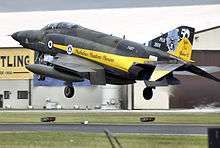 Special commemorative scheme
Special commemorative scheme.jpg) Demo Team Zeus special demonstration scheme
Demo Team Zeus special demonstration scheme
Aircraft accidents and incidents
The worst accident in the history of the Hellenic Air Force occurred on February 5, 1991 when Lockheed C-130H Hercules s/n 748 crashed into Mount Othrys during the landing approach to Nea Anchialos. Sixty-three people were killed.
See also
References
- "Hellenic Air Force/History". Haf.gr. Archived from the original on July 18, 2009. Retrieved July 29, 2009.
- As a separate service. Army Aviation established in 1911
- Piekalkiewicz, Janusz; Van Heurck, Jan (1985). The air war, 1939–1945. Blandford Press. ISBN 978-0-918678-05-8. Retrieved March 25, 2016.
- Carr, John (2012). On Spartan Wings. Barnsley, SY, Pens & Sword Military. p. 4. ISBN 978-1-84884-798-9.
- "Hellenic Air Force History – Greco-Italian War ... German Invasion;—". www.haf.gr. Archived from the original on December 12, 2008. Retrieved February 6, 2010.
- Carr, John (2012). On Spartan Wings. Barnsley, SY, Pens & Sword Military. p. 45. ISBN 978-1-84884-798-9.
- Carr, John (2012). On Spartan Wings. Barnsley, SY, Pens & Sword Military. p. 171. ISBN 978-1-84884-798-9.
- "Hellenic Air Force History – Middle East;—". www.haf.gr. Archived from the original on July 18, 2009. Retrieved February 6, 2010.
- "335 Μοίρα Βομβαρδισμού;—". www.haf.gr. Archived from the original on May 29, 2010. Retrieved February 12, 2010.
- "330 Μοίρα;—". www.haf.gr. Archived from the original on May 2, 2010. Retrieved February 7, 2010.
- "346 Μοίρα;—". www.haf.gr. Archived from the original on April 20, 2010. Retrieved February 7, 2010.
- "338 Μοίρα Δίωξης – Βομβαρδισμού;". Haf.gr. Archived from the original on March 1, 2009. Retrieved July 29, 2009.
- "AeroWorldNet(tm) – Greece Buys 50 F-16s and 15 Mirage 2000s [May 3, 1999]". AeroWorldNet. May 3, 1999. Archived from the original on October 24, 2008. Retrieved August 7, 2009.
- "Hellenic Air Force Weapons — F-16C/D Block 52+ FIGHTING FALCON". Haf.gr. Archived from the original on May 16, 2009. Retrieved July 29, 2009.
- "340 Μοίρα;". Haf.gr. Archived from the original on June 14, 2009. Retrieved February 9, 2010.
- "Παραλαβή νέων F-16 Block 52+ Advanced;". anaxfiles.blogspot.com. March 19, 2009. Archived from the original on August 11, 2011. Retrieved September 6, 2011.
- "Παραλαβή νέων F-16 Block 52+ Advanced;". anaxfiles.blogspot.com. Archived from the original on August 11, 2011. Retrieved February 9, 2010.
- "Ολοκληρώθηκαν οι παραδόσεις των F-16 Adv. στην 335Μ;". defencenet.gr. Archived from the original on February 2, 2010. Retrieved February 9, 2010.
- "DefenceNet — Στην αφετηρία - και πάλι - για το πρόγραμμα του Νέου Μαχητικού Αεροσκάφους 6 υποψηφιότητες (βίντεο)". Defencenet.gr. Archived from the original on February 10, 2011. Retrieved February 6, 2011.
- "F-16 Greece". Lockheed Martin. Retrieved December 13, 2019.
- "Archived copy". Archived from the original on December 21, 2018. Retrieved December 21, 2018.CS1 maint: archived copy as title (link)
- "Greek navy takes initial reactivated P-3B". Flight Global. Retrieved June 5, 2019.
- "Greece to consider F-35 purchase, Vassilis Nedos | Kathimerini". www.ekathimerini.com. Retrieved June 16, 2019.
- "Greece eyes F-35s as F-16 replacement". Flightglobal.com. April 15, 2019. Retrieved June 16, 2019.
- "Pentagon eyes F-35 sales to Greece, Romania and Poland: U.S. official". Reuters. April 4, 2019. Retrieved June 16, 2019.
- "Greek Prime Minister Says Country Wants to Join F-35 Jet Programme". sputniknews.com. Retrieved January 8, 2020.
- "Το παρασκήνιο της απόφασης για την απόκτηση των stealth μαχητικών - Μια Μοίρα F-35 o στόχος της Αθήνας". newpost.gr. January 8, 2020.
- "Ικανοποίηση στην κυβέρνηση από το τετ α τετ Μητσοτάκη - Τραμπ: Τα αιτήματα και τα κέρδη της Αθήνας". protothema.gr. January 8, 2020.
- Thanos Veremis, The military in Greek politics: from independence to democracy, 1997
- Amikam Nachmani, International intervention in the Greek Civil War: the United Nations Special Committee on the Balkans 1947–1952, 1990
- "Greece and Turkey: Offensive and Defensive Balance of Air Power in 2012 - Greece". www.balkanalysis.com. Archived from the original on January 9, 2018. Retrieved January 8, 2018.
- Mehta, Aaron (July 17, 2019). "Turkey officially kicked out of F-35 program, costing US half a billion dollars". Defense News. Retrieved September 3, 2019.
- "Erdogan: US scrapping F-35 jet deal with Turkey would be robbery". www.aljazeera.com. Retrieved September 3, 2019.
- "Hellenic Airforce Ranks". Archived from the original on May 15, 2012. Retrieved January 8, 2018.
- "World Air Forces 2019". Flightglobal Insight. 2019. Archived from the original on January 23, 2019. Retrieved February 6, 2019.
- "World Air Forces 2020". Flightglobal Insight. 2020. Retrieved April 1, 2020.
- "World Air Forces 2016" (PDF). Flightglobal Insight. 2016. Retrieved April 1, 2016.
- "Equipment". HAF official website. Retrieved February 23, 2019.
- "The Minister of National Defence Evangelos Apostolakis at the Ceremony for the Acceptance of New Training Aircrafts [sic] by the Hellenic Air Force". Ministry of National Defence. Retrieved April 13, 2020.
- "UAV MALE Πήγασος ΙΙ. To ελληνικό μη επανδρωμένο αεροσκάφος είναι έτοιμο και επιχειρησιακό!". March 27, 2013. Retrieved January 8, 2018.
- "WAF 1955". flightglobal.com. Retrieved December 12, 2017.
- "WAF 1971". flightglobal.com. Retrieved December 12, 2017.
- "WAF 1975". flightglobal.com. Retrieved December 12, 2017.
- "Athens installs Patriot missiles". July 27, 2004. Archived from the original on January 9, 2018. Retrieved January 8, 2018 – via news.bbc.co.uk.
- "Hellenic Air Force Historical Aircraft". HAF Official website. Archived from the original on March 4, 2016. Retrieved February 23, 2019.
- "Airco de Havilland D.H. 4". Hellenic Air Force. Archived from the original on February 24, 2019. Retrieved February 24, 2019.
- "Airco de Havilland D.H. 9". Hellenic Air Force. Archived from the original on February 24, 2019. Retrieved February 24, 2019.
- "Airco de Havilland D.H.6". Hellenic Air Force. Archived from the original on February 24, 2019. Retrieved February 24, 2019.
- "Exhibits". Hellenic Air force Museum. Archived from the original on February 1, 2019. Retrieved February 23, 2019.
- "The 'Greek Spitfire' Flies!". Warbirds News. January 20, 2020. Retrieved April 13, 2020.
- "HAF retires last RF-4Es". The Aviationist. Archived from the original on February 9, 2019. Retrieved February 23, 2019.
Further reading
- George J. Beldecos et al. Hellenic Wings: An Illustrated History of the Hellenic Air Force and its Precursors - 1908–1944, pub. Air Historical Branch (HAF), 1st edition (1999)
- A. Tsagaratos (Editor): Hellenic Air Force Yearbook 2010/B, Special Projects, Athens, Greece, ISSN 1790-4102 (2011). Page 8 contains a summary Order of Battle and a summary aircraft inventory, as of December 2010.
- Carr, John On Spartan Wings, Barnsley, SY, Pens & Sword Military, 2012. ISBN 978-1-84884-798-9.
- "World Military Aircraft Inventory", Aerospace Source Book 2007, Aviation Week & Space Technology, January 15, 2007
- The Library of Congress Country Studies, CIA World Factbook
- Greece – The Hellenic Air Force
- E. A. Pagotsis (2008). Hellenic Defence Review 2008–2009. Athens: Line Defence Public Ltd. pp. 128–159.
- Aircraft Inventory (Greek)
Bibliography
- Carr, John, On Spartan Wings, Barnsley, SY: Pens & Sword Military, 2012. ISBN 978-1-84884-798-9.
External links
| Wikimedia Commons has media related to Hellenic Air Force. |
.svg.png)